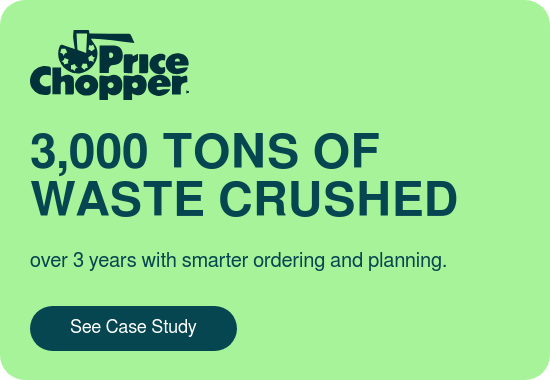As the world’s population continues to grow, food waste has become an increasingly pressing issue. According to the UN, one-third of all food produced in the world goes to waste each year. This has significant economic, environmental, and social impacts, including increased greenhouse gas emissions, decreased food security, and lost revenue for grocery stores.
The grocery industry is one of the biggest contributors to food waste, with up to 10% of all food produced is either lost or wasted before it even reaches the store shelves. However, advancements in automation technology can help reduce food waste in grocery stores significantly and the industry has started to use automation to combat this issue.
In this blog post, we will explore how automation can be leveraged by grocery store leaders to reduce food waste.
Automated Inventory Management
One of the most significant sources of food waste in grocery stores is overstocking. Grocery stores often order more inventory than they need to ensure they don’t run out of stock. However, when the inventory is not sold, it is often thrown away.
Automated inventory management systems can help grocery stores manage their inventory effectively, reducing overstocking and reducing food waste. These systems use artificial intelligence (AI) algorithms to predict customer demand and adjust inventory levels accordingly.
By keeping inventory levels in line with customer demand, grocery stores can reduce the amount of unsold inventory that goes to waste.
Automated inventory management systems can also track the expiration dates of products and alert store staff when items are approaching their expiration date. This allows stores to pull products from shelves before they expire, reducing the amount of expired food that needs to be thrown away.
Reducing Overordering with Automated Data Analytics
Another significant source of food waste in grocery stores is overordering. Grocery stores often order more food than they need, which can lead to spoilage and waste. However, automated data analytics can help grocery stores make more informed decisions about their orders, reducing overordering and food waste.
Automated data analytics tools can analyze sales data to identify trends and patterns in customer behavior. This data can then be used to adjust order quantities and ensure that stores are only ordering what they need. This can help reduce overordering, which, in turn, reduces the amount of unsold inventory that goes to waste.
In addition, data analytics tools can help grocery stores identify which products are not selling well, allowing them to adjust their orders accordingly. By reducing the amount of unsold inventory, grocery stores can reduce the amount of food waste they generate.
Automated Pricing and Discounting
Markdowns and discounts are a common way for grocery stores to sell unsold inventory. However, manually adjusting prices and offering discounts can be time-consuming and inefficient. Automation can help grocery stores streamline this process and reduce the amount of food waste generated.
Automated dynamic markdown systems can adjust prices based on factors such as expiration dates, sales data, and inventory levels. This allows stores to quickly and efficiently offer discounts on products that are approaching their expiration date or that are not selling well. By selling these products at a reduced price, grocery stores can reduce the amount of unsold inventory that goes to waste.
Reducing Food Waste in the Supply Chain with Automation
Food waste is not just an issue for grocery stores; it also occurs in the supply chain. Automation can be used to reduce food waste at every stage of the supply chain, from the farm to the grocery store by reducing the amount of time that products spend in transit, reducing the risk of spoilage and waste.
Building a More Sustainable Future
Grocers must implement the right technology to balance demand with supply and availability, improve efficiency, manage markdowns, and reduce overstocking to win. The use of automation in the grocery industry has the potential to significantly reduce food waste and create a more sustainable and efficient supply chain. Business leaders in the industry should consider investing in these technologies to reduce waste and increase their profitability and reputation as environmentally responsible businesses. By acting now, we can create a future where food waste is a thing of the past.




